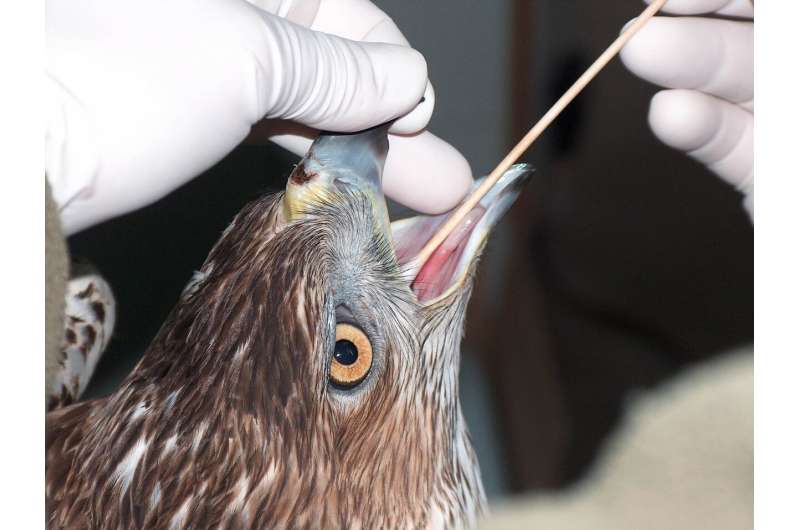Credit: Asociación RUVID
Oral avian trichomonosis is an infection caused by parasitic protozoon Trichomonas gallinae. By infecting mainly the oropharyngeal and crop mucosa, the severe lesions can cause the death of the birds due to suffocation or starvation, by preventing them from swallowing, or causing a lethal systemic infection. In order to facilitate the prognostication and to establish the best treatment of this infection, especially in the case of birds of prey, researchers from the CEU Cardenal Herrera (CEU UCH), Complutense of Madrid (UCM), Católica de Valencia (UCV) universities and the Native Fauna and its Habitat Rehabilitation Group (GREFA) have published the first scale of avian lesions caused by trichomonosis in international scientific journal Veterinary Parasitology.
According to researchers Marilena Garijo and Joaquín Ortega, Veterinary Parasitology and Pathological Anatomy professors, respectively, at the CEU UCH, "in this scale we have established three levels of severity of the lesions from oral trichomonosis—mild, moderate and severe—depending on their size, depth and location. After selecting and analyzing 94 clinical cases of interest for this study, we have detected that the location and type of lesions in the oropharyngeal area of birds varies depending on the species and the group they belong to. Their classification by categories will allow veterinarians to establish an improved prognosis of the infection and the most appropriate treatment for each case."
From pigeons to birds of prey
Pigeons and turtledoves are the natural reservoir of the protozoon that causes this trichomonosis, and many of them are carriers of this parasite, but they have adapted to the disease and their defenses can keep it under control. However, these birds can transmit the infection to other species through water or food, or when being eaten by birds of prey. Mortality resulting from trichomonosis is greater in birds of prey, some of which are in danger of extinction, and in other domestic species, such as canaries and goldfinches, which can be affected by epidemic outbreaks.
In the clinical cases studied to establish the scale, the Spanish researchers analyzed cases in birds from four different groups that include diurnal and nocturnal birds of prey, as well as columbiform birds. In 10.6% of cases, the detected injuries were mild, moderate in 18.1% and severe in 71.3%.
"In the mild and moderate cases, the therapies are often effective, but in almost three in four birds with oral trichomonosis we have detected severe injuries, with a bad prognosis that leads to a very high mortality rate. For these cases, nor drugs nor surgery are effective, and euthanasia is recommended. Thus, if the infection spreads among birds of prey, it could be very dangerous for the preservation of vulnerable species in Spain such as Bonelli's eagle."
More information: M.C. Martínez-Herrero et al. Oral trichomonosis: Description and severity of lesions in birds in Spain, Veterinary Parasitology (2020). DOI: 10.1016/j.vetpar.2020.109196
Journal information: Veterinary Parasitology
Provided by Asociacion RUVID























